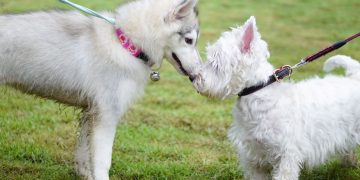Bringing a new puppy into your home is an exciting and rewarding experience, but it can also come with challenges, particularly when it comes to managing their anxiety. Anxiety in puppies is common, especially when they are adjusting to a new environment, leaving their littermates, and meeting new people and pets. Fortunately, there are several effective ways to help reduce anxiety in your new puppy and set them up for a lifetime of happiness and comfort.
In this guide, we’ll explore the causes of anxiety in puppies, the signs to watch for, and provide actionable strategies to help calm your furry friend.
Understanding Puppy Anxiety
Before addressing how to reduce anxiety in your puppy, it’s important to understand what causes it. Anxiety in puppies can stem from a variety of factors, including:
- Separation Anxiety: Puppies that have just been adopted may experience stress when left alone, as they are used to being with their littermates and mother.
- Environmental Stress: Moving to a new home means new sights, sounds, smells, and routines, which can overwhelm a puppy.
- Fear of New Experiences: Loud noises, unfamiliar people, or other pets can trigger fear and anxiety.
- Lack of Socialization: Puppies that haven’t had enough exposure to different people, animals, and environments may become anxious in new situations.
Signs of Anxiety in Puppies
Recognizing the signs of anxiety is the first step toward alleviating it. Some common signs of anxiety in puppies include:
- Excessive barking or whining
- Pacing or restlessness
- Destructive behaviors (e.g., chewing furniture or shoes)
- Urination or defecation inside the house
- Panting or drooling
- Avoiding eye contact or cowering
- Loss of appetite or difficulty eating
If you notice these behaviors, it may be an indication that your puppy is feeling anxious and could benefit from strategies to help them feel more comfortable.
Ways to Reduce Anxiety in Your New Puppy
1. Create a Safe and Comfortable Space
One of the first things you should do is create a dedicated, quiet space where your puppy can retreat to when they feel overwhelmed. This could be a crate, a playpen, or a cozy bed in a low-traffic area of your home. Puppies often feel more secure when they have their own space where they can relax and sleep undisturbed.
- Crate Training: Crates can be a safe and comforting space for puppies, as they provide a den-like environment. Make sure to introduce the crate gradually, with positive reinforcement, and never use it as a form of punishment.
- Comfort Items: Place soft bedding, familiar toys, or an item with your scent in their space to provide reassurance. These familiar smells can help comfort your puppy during anxious moments.
2. Establish a Routine
Puppies thrive on routine, as it helps them feel more secure and confident in their new environment. Establishing a consistent daily schedule for feeding, walks, playtime, and bedtime can reduce anxiety by giving your puppy structure and predictability.
- Consistent Feeding Times: Feed your puppy at the same times each day to help them anticipate when they’ll get their next meal, reducing any anxiety surrounding hunger.
- Regular Exercise and Play: Ensure that your puppy gets enough physical and mental stimulation throughout the day. Regular play sessions and walks can help burn off excess energy and reduce restlessness and anxiety.
3. Socialization and Exposure
Early socialization is key to helping your puppy grow into a well-adjusted adult dog. The more experiences they have with different people, animals, and environments, the more confident and less anxious they will become in new situations.
- Introduce New Experiences Gradually: Avoid overwhelming your puppy with too many new situations at once. Instead, introduce them to new people, pets, and environments gradually, using positive reinforcement to reward calm behavior.
- Puppy Classes: Consider enrolling your puppy in a socialization class where they can interact with other puppies in a controlled environment. This will help them become comfortable around other dogs and people.
4. Provide Mental Stimulation
A mentally stimulated puppy is less likely to become bored and anxious. Puzzle toys, treat-dispensing toys, and basic training exercises can help keep their mind engaged and provide a healthy outlet for their energy.
- Interactive Toys: Toys that dispense treats or require problem-solving can keep your puppy occupied for longer periods, preventing anxiety-driven behaviors like chewing or barking.
- Training Sessions: Short, positive training sessions can also provide mental stimulation and help strengthen the bond between you and your puppy. Training provides a sense of accomplishment and helps build confidence.
5. Use Positive Reinforcement
Positive reinforcement is a highly effective technique for reducing anxiety in puppies. Rewarding your puppy for calm behavior can help them associate new experiences with positive outcomes, making them more confident in the future.
- Rewards and Praise: When your puppy remains calm in a potentially stressful situation, offer praise, treats, or affection. This will teach them that being calm is the best way to gain rewards.
- Avoid Punishment: Punishing an anxious puppy for fearful behavior can make their anxiety worse. Instead, focus on redirecting their attention and rewarding calm behavior.
6. Calming Products and Techniques
There are several calming products and techniques available that can help soothe an anxious puppy.
- Calming Pheromone Diffusers: Products like Adaptil, which release calming pheromones, can help reduce anxiety in puppies by mimicking the natural scents that a mother dog would release to comfort her puppies.
- Thundershirts: These snug-fitting garments apply gentle pressure to your puppy’s body, which has been shown to have a calming effect on some dogs, particularly during stressful events like thunderstorms or fireworks.
- Music and White Noise: Playing calming music or white noise can help drown out loud noises that might be triggering anxiety. Some companies even offer music specifically designed to calm dogs.
7. Seek Professional Help
If your puppy’s anxiety seems severe or is not improving with these strategies, it may be time to consult with a veterinarian or a professional dog trainer. A veterinarian can rule out any underlying medical conditions that might be contributing to your puppy’s anxiety, and a certified trainer can offer personalized advice and training techniques.
- Veterinary Care: In some cases, your veterinarian might recommend medications or supplements to help manage your puppy’s anxiety, particularly if it’s preventing them from living a comfortable life.
- Behavioral Therapy: A certified dog behaviorist can help you develop a customized plan to address anxiety and provide guidance on how to work through the issue.
Conclusion
Reducing anxiety in your new puppy requires patience, consistency, and understanding. By providing a safe space, establishing a routine, socializing your puppy, offering mental stimulation, and using positive reinforcement, you can help them feel secure and reduce their anxiety over time. If anxiety persists, seeking professional advice can be an important step toward ensuring your puppy’s well-being.
Remember, every puppy is unique, and some may take longer to adjust than others. With your love and support, your new puppy will feel at home in no time, becoming a confident and happy companion.
This comprehensive guide provides both preventative and corrective measures to ensure your puppy’s transition into your home is as smooth and anxiety-free as possible

























